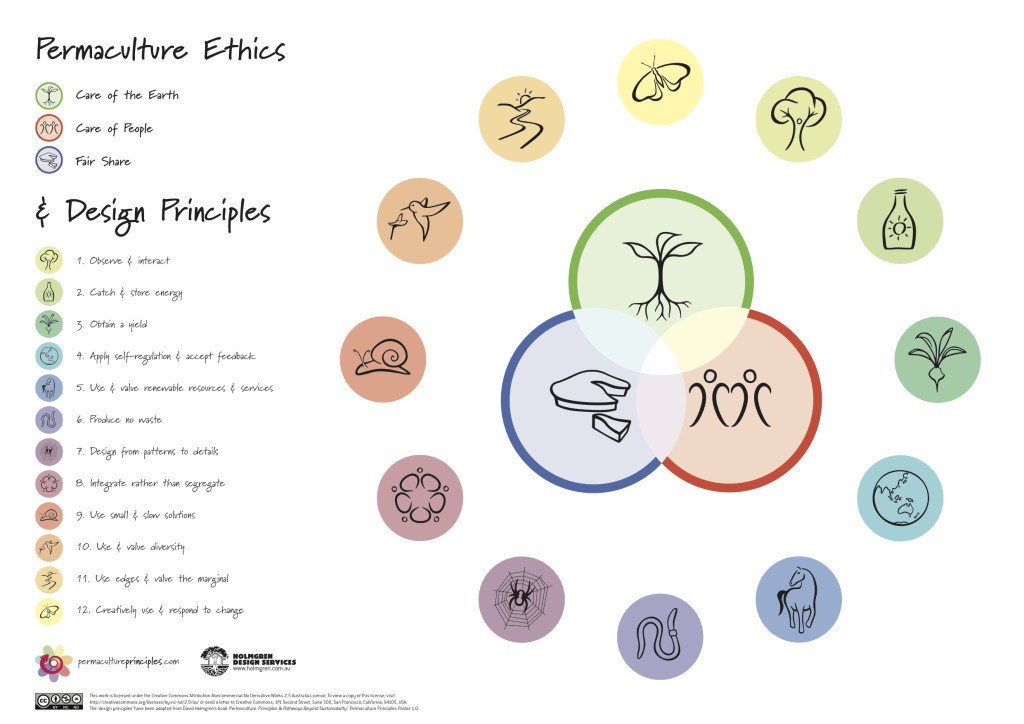I studied Permaculture with Geoff Lawton, Bill Mollison’s successor, using his 576 pages book: Permaculture, a designer manual (click here for the book).
From Bill Mollison:
Permaculture is a philosophy of working with, rather than against nature; of protracted and thoughtful observation rather than protracted and thoughtless labor; and of looking at plants and animals in all their functions, rather than treating any area as a single product system.
From Wikipedia:
Permaculture is a branch of ecological design, ecological engineering, environmental design, construction and integrated water resources management that develops sustainable architecture, regenerative and self-maintained habitat and agricultural systems modeled from natural ecosystems. The term permaculture (as a systematic method) was first coined by Australians Bill Mollison and David Holmgren in 1978.
I like both definition.
Permaculture ethics:
- Care for the earth: Provision for all life systems to continue and multiply. This is the first principle, because without a healthy earth, humans cannot flourish.
- Care for the people: Provision for people to access those resources necessary for their existence.
- Return of surplus: Reinvesting surpluses back into the system to provide for the first two ethics. This includes returning waste back into the system to recycle into usefulness.

